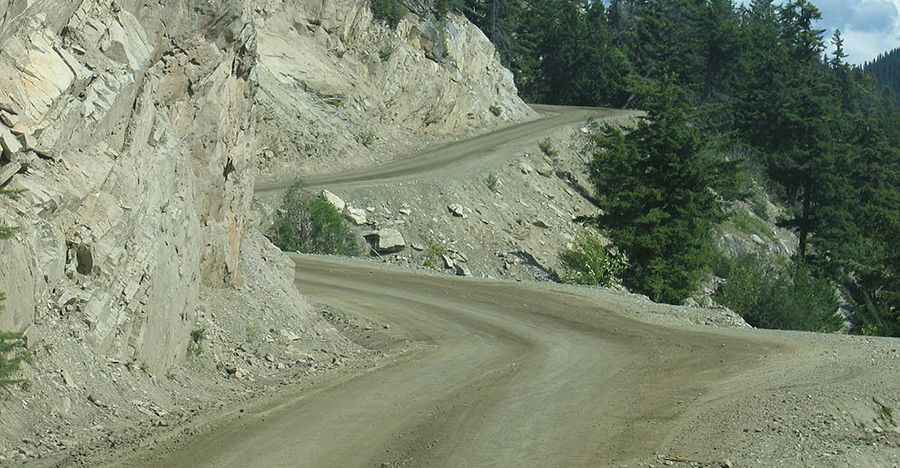Heckman Pass: gradients of 18%, no guardrails and sheer drop-offs
Heckman Pass is a high mountain pass at an elevation of 1.524m (5,000ft) above sea level, located in west-central British Columbia, Canada.

Is the road to Heckman Pass in BC paved?
The road through the summit is mostly unpaved. It is called Highway 20, also known as Bella Coola Road and Chilcotin Bella Coola Highway. The pass is located west of Anahim Lake on the divide between the Chilcotin Plateau and the Bella Coola Valley.
How long is Heckman Pass?
The pass, also known as ‘The Hill,’ is 75.6 km (46.97 miles) long, running from Stuie (in the Bella Coola Valley) to Anahim Lake. It takes about one hour to complete the drive. The pass is the highest point on the highway.
When was Heckman Pass Road built?
Set high in the Rainbow Range, the road was completed in 1953. With only two bulldozers starting from opposite ends, supplies bought on credit, and a labor force that only had the promise of being paid, they clawed their own way up and out of the valley. The work took one year and two weeks to complete. Today the road is officially known as Highway 20 but is still referred to locally as the "Freedom Road" to commemorate the earlier years of isolation.
Is the road to Heckman Pass in BC challenging?
The road is narrow, winding, and the most famous section is 10 km of steep, brake-grinding switchbacks with up to 18% grades and 11 notable curves. The road cuts along a cliff face where there is only a foot-high wall separating you and a sheer, base jumpers' dream, drop to the valley below. There are no guide rails on this dirt road, and should you slip or miss a curve, it's a long drop to the bottom. It can easily be driven by standard model cars. It is such a white-knuckle gravel road that on occasion tourists who have ventured down it have refused to return on it. Locals say they are confident but not complacent when they drive ‘The Hill.’ They know they have to pay attention, especially on the way down — lean on the brakes too hard, and your wheels could slip out from beneath you. Winter tires or chains are required on most routes in British Columbia from October 1 to April 30.
Pic: Qwesy [CC BY 3.0 (http://creativecommons.org/licenses/by/3.0)], via Wikimedia Commons